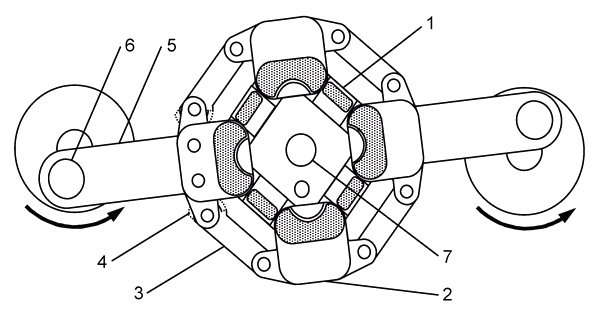 |
. PATENT: ARTICULATED RHOMBIC PISTON FOR THERMAL MACHINES Filed in Italy on 18/11/2008, N° N° TO 2008 A 000847 vittorio.scialla@strumentiperleaziende.com |
 |
|
|
Two opposed articulated edges of said piston are provided with piston rods (5), linked to two cranks (6), which, by effect of a transmission system, rotate in the same direction, at the same speed and with a 180° phase-shift with each other, so that said articulated rhombic prism keeps itself always centred with intake and exhaust valves (7), placed in front of each other in said two parallel planes of said machine body. Parallelism and alignment among said components of said piston are assured by means of auxiliary connecting rods (3) and gears (4).
|
|
1. INTERNAL COMBUSTION
ENGINES
Articulated rhombic prism pistons feature a rare concomitance of positive characteristics, which overcome all of the well known limitations of cylindrical piston engines, and may mark the birth of the ideal engine. Among their advantages, the following ones are most worth to be cited:
SIMULATOR (xls) (Enable the macros of Excel - Tools-Options-Protection-ProtectionMacro-MeanLevel) |
|
2. CLOSED CYCLE
THERMAL MACHINES (STIRLING MACHINES)
Conventional Stirling machines, based on cylindrical pistons, are operated at much lower pressure than internal combustion engines, so they cannot utilize piston rings and, in order to assure a good sealing, they require high precision machining of substantially larger cylinders. In many situations, these factors limit their economical feasibility. Stirling machines based on articulated rhombic prism pistons:
|
|